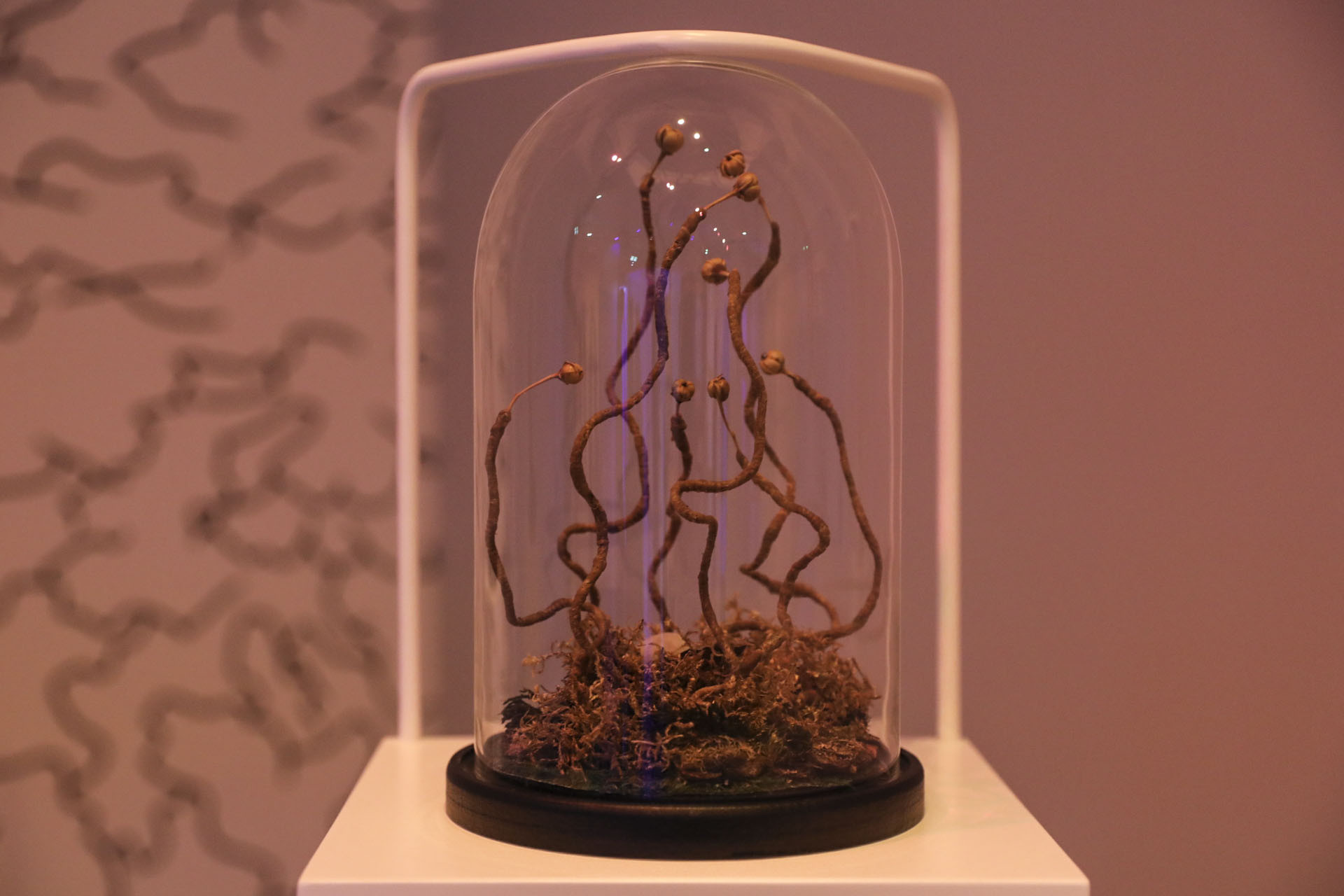Cabinet of Curiosities
Ruslan Polanin’s project is an experiment in “domestication of the horrific”, combating traumatic reality: by downsizing the images of monsters, the artist tames them.
The exhibition Sorcerers shows how different artists work with dark folklore. They are all intrigued by various aspects of the fantastic, supernatural and horrific, as manifested in history, local mythology, Soviet folklore, and digital reality. Although it may seem at first glance that sculptures of wood spirits and references to 1980s children’s films have nothing to do with modern nightmares, the project helps to focus our perception.

Ruslan Polanin has long been interested in the terrifying, horrific and inexplicable. His solo art projects are organised around various parascientific ideas and concepts, mystical texts and psychoanalytical theories. Having studied seances, mediums, table rapping and their traces in history, Polanin references works by post-structuralist philosophers to create subjects in which words and concepts play an active part.
In the essay Unsettling Strangeness: The Aesthetics of Horror and Its Practical Embodiment in Modern Art, he examines the categories of the “dark” Sublime and Horrific, scrutinising these concepts in works by Freud, Marie Bonaparte, and even the king of horror Stephen King, as well as in modern artists, including Mika Plutitskaya. Thus, the narrative moves from the quintessential visual nightmares such as the work of Hans Bellmer (1902–1975) to young Russian artists.
In Cabinet of Curiosities, the artist introduces his own term, un-hygge, which he explains as “the domestication of the horrific”, a hybrid of Scandinavian cosiness, hygge, and Freud’s concept of the uncanny, Das Unheimliche. Polanin attempts to devise an alchemic formula which will cause the fear arising in certain social and historical situations to have a healing, therapeutic effect. Ritual figures of demons and spirits or pagan altars acquire decorative function, and hence lose their sacred nature and their otherworldly mystery inscrutable for ordinary people.
Losing their power and terrifying size, these creatures still remain monsters (only now they are tiny), and appeal to the depths of the unconscious, reflecting Jungian archetypes, but they do so much more gently than occult forces usually do. In reduced form, symbols of the horrific truly lose their power to scare us.
Domestication is a common artistic method to combat traumatic reality, making us look differently at the existing order of things and casting doubt on the very possibility of danger. “Presenting the figure of a monster (the typical denizen of a horror film) in a positive light makes it possible at some level to become more open for the Other and Alien, ” the artist notes.
A change in the context of perception can convert the emotional overtones of concepts themselves to their complete opposites. The use of natural materials is also fundamentally important: like in neo-pagan altars, they take on a new lease of life in Polanin’s work. The Cabinet of Curiosities is the only example in the exhibition in which the horrific is tamed.